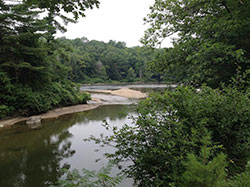New Haven
Soils
Written by Emma Stuhl
Soil is the foundation for much of life, physically and metaphorically. It is the medium in which we grow our food, the base upon which we build our homes and businesses, and the holder of many of the nutrients that feed us and the plants and animals we consume. The soils of New Haven are integral to the town’s rich agricultural history and will continue to shape the way people use the land in the future.New Haven’s soils tend to be fairly nutrient-rich, and many areas are classified as prime agricultural land and continue to be used for agriculture. Some of this richness comes from the clay deposits and limestone bedrock that underlie much of New Haven’s clay and loam topsoil. Clays hold onto nutrients well, and thus help prevent them from washing out in rainstorms. The calcium that leaches out of the bedrock makes the soil less acidic, which makes it easier for many plants to grow. It is also one of the key nutrients that plants need to absorb. This fertility supports crops and favors some valued species, like sugar maples.
The forces of erosion continue to shape the soils of New Haven today, as particles slowly change shape and size, and sediment moves from one place to another. Wind blows dust through the air. People move dirt during construction and farming, and expose soil to wind and water. Water trapped in the cracks of rocks expands when it freezes; this widens the crevices and eventually splits the rocks into smaller pieces. Water also moves sediment and deposits it in floodplains, streambanks, and lakes. This soil fertilizes the land or water where it settles downstream.
